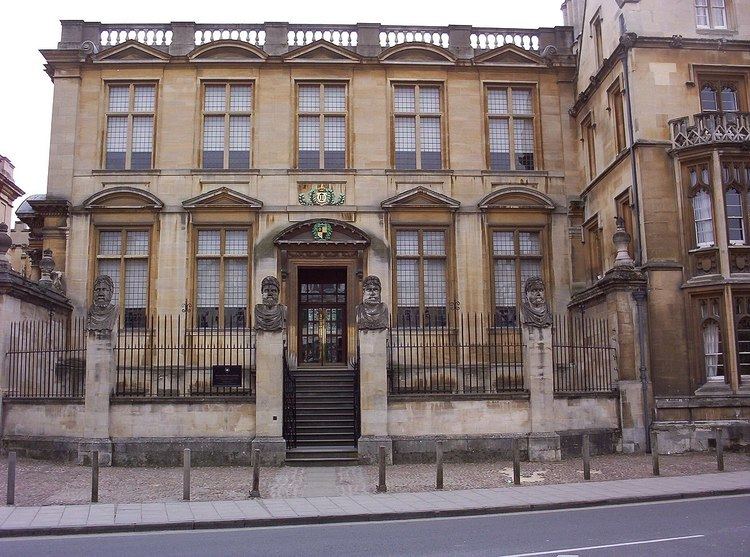Director Silke Ackermann Function Museum | Phone +44 1865 277280 | |
 | ||
Established 1683 (as Ashmolean Museum)
1924 (as Museum of the History of Science) Location Broad Street, Oxford, England Type University museum of the history of science Website Museum of the History of Science Address Broad St, Oxford OX1 3AZ, UK Hours Open today · 12–5PMWednesday12–5PMThursday12–5PMFriday12–5PMSaturday12–5PMSunday12–5PMMondayClosedTuesday12–5PMSuggest an edit Similar Oxford University Museum, Pitt Rivers Museum, Ashmolean Museum, Museum of Oxford, Sheldonian Theatre Profiles | ||
An introduction to the museum of the history of science oxford
The Museum of the History of Science in Broad Street, Oxford, England, holds a leading collection of scientific instruments from Middle Ages to the 19th century. The museum building is also known as the Old Ashmolean Building to distinguish it from the newer Ashmolean Museum building completed in 1894. The museum was built in 1683, and it is the world's oldest surviving purpose-built museum.
Contents
- An introduction to the museum of the history of science oxford
- History
- Collections and exhibitions
- Curators
- References
The museum is open to the general public with free admission every afternoon except Mondays.
History
Built in 1683 to house Elias Ashmole's collection, it was the world's first purpose-built museum building and was also open to the public. The original concept of the museum was to institutionalize the new learning about nature that appeared in the 17th century and experiments concerning natural philosophy were undertaken in a chemical laboratory in the basement, while lectures and demonstration took place in the School of Natural History, on the middle floor. Ashmole's collection was expanded to include a broad range of activities associated with the history of natural knowledge and in 1924 the gift of Lewis Evans' collection allowed the museum further improvement, becoming the Museum of the History of Science and appointing Robert Gunther as its first curator.
Collections and exhibitions
The collection and the building itself now occupies a special position in the study of the history of science and in the development of western culture and collecting. One of the most iconic objects in the collection is Einstein's Blackboard that Albert Einstein used on 16 May 1931 in his lectures while visiting the University of Oxford, rescued by dons including and E. J. Bowen and Gavin de Beer.
The current collection contains around 18,000 objects from antiquity to the early 20th century, representing almost all aspects of the history of science and is used for both academic study and enjoyment by the visiting public. The museum contains a wide range of scientific instruments, such as quadrants, astrolabes (the most complete collection in the world with c.170 instruments), sundials, early mathematical instruments (used for calculating, astronomy, navigation, surveying and drawing), optical instruments (microscopes, telescopes and cameras), equipment associated with chemistry, natural philosophy and medicine, and a reference library regarding the history of scientific instruments that includes manuscripts, incunabula, prints and printed ephemera, and early photographic items.
The museum shows the development of mechanical clocks. Lantern clocks and longcase clocks are exhibited in the Beeson Room, named after the antiquarian horologist Cyril Beeson (1889–1975) who gave his collection to the museum. Early turret clocks are exhibited above the stairs from the basement to the raised ground floor.
From October 2009 until February 2010, the Museum hosted the first major exhibition of Steampunk art objects, curated by Art Donovan and presented by Dr Jim Bennett, then the museum director.
Curators
The following have been Curator or Secretary to the Committee or Director at the museum:
